The variety of flowers that can be found in Mexico has fascinated every flower lover for years now; each landscape in Mexico has its own unique flowers. Its land produces a stunning arrangement of flowers that seems to blend smoothly. A common item found in all Mexican homes is flowers.
Home gardens in Mexico are widespread, and flowers are vital ingredients in a variety of Mexican festivals, including the Day of the Dead. There is also a feast called Tlaxochimoco, which translates to “the distribution of flowers.” The Mexicans even give flowers as offerings to their deities. Here are some of the common Mexican Flowers you need to know:
- Mexican Sunflower
- Pineapple Sage
- Mexican Honeysuckle
- Poinsettia
- Laelia Orchid
- Mexican Marigold
- Mexican Morning Glory
- Mexican Passion Flower
- Chocolate Cosmos
- Mexican Poppy
- Sword Lily
- Belize Sage
- Dahlia
- Yucca Flower
- Birds of Paradise
- Mexican Frangipani
- Mexican hat flower
- Mexican Lady’s Slipper
- Mexican petunia
- Mexican Primerose
- Mexican heather
- Mexican Orange
- Mexican fleabane
- Mexican aster
- Mexican cigar
Mexican sunflowers

Mexican sunflowers yield dozens of showy daisy-like blooms with petals in fiery colors of red, orange, or yellow, all with yellow centers. The serrated ovate leaves are dark green on tall, sturdy stems. Plant seeds or seedlings in the spring to enjoy an ongoing display of profuse blooms throughout the summer into fall.
Pineapple sage

Pineapple sage is an herbaceous perennial with scarlet red flowers, growing 1.2 to 1.5 meters. The ovate leaves are a grey-green colour, with some people describing them as having a yellow tinge. The flowers are a distinct scarlet red colour and they grow in whorls of 6-12 flowers on inflorescences. The have a tubular appearance and are about 2.5 cm long, with two distinct lips.
Mexican Honeysuckle

Mexican Honeysuckle is a small shrub that isn’t fussy, blooms most of the year, and is attractive to hummingbirds. With yellow-green leaves and bright orange flowers, Mexican honeysuckle grows 2 to 4 feet tall and spreads 3 to 6 feet wide. The soft, velvety leaves become larger in partial shade locations. Clusters of bright orange, narrowly tubular flowers appear almost any time of the year.
Poinsettia
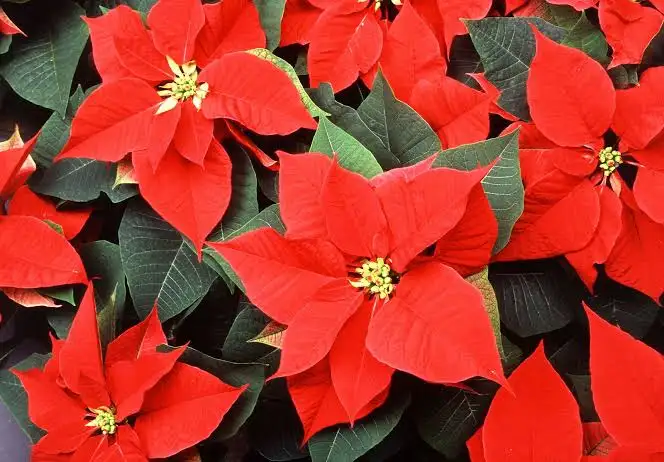
The poinsettia, also known as the Christmas flower or Mexican flameleaf, is a small shrub indigenous to Mexico. Most poinsettias can be recognized by their deep green foliage and vibrant cherry hue. Other varieties come in pink, orange, white, and purple, and can also appear speckled or variegated. While the red variety is the most popular, there are about 150 varieties. Poinsettias are also distinct for their flower-shaped leaves.
Laelia Orchid

Leila orchids are commonly found in subtropical climates of central America and mostly Mexico. They are typically epithyte herbs with laterally compressed pseudobulbs. One to four leathery or fleshy leaves are born near the top of each pseudobulb, and can be broadly ovate to oblong.The inflorescence is a terminal raceme. The flowers have 8 pollinia; petals are of a thinner texture than the sepals; sepals and petals are of similar shape, but the sepals being narrower; the lip or labellum is free from the arched flower column.
Mexican Marigold

Although native to Mexico and Central America, this plant is usually known as the African marigold because it was through African ports that plant traders first brought the plant to Europe. A true annual that lasts only a season, the African marigold is a member of the aster family, with cultivars that offer large round flowers in shades of yellow, orange, and creamy white atop green stems and fern-like foliage. These aromatic flowers brighten gardens from early summer until frost. While bountiful, these marigolds are not aggressive or invasive.
Morning Glory
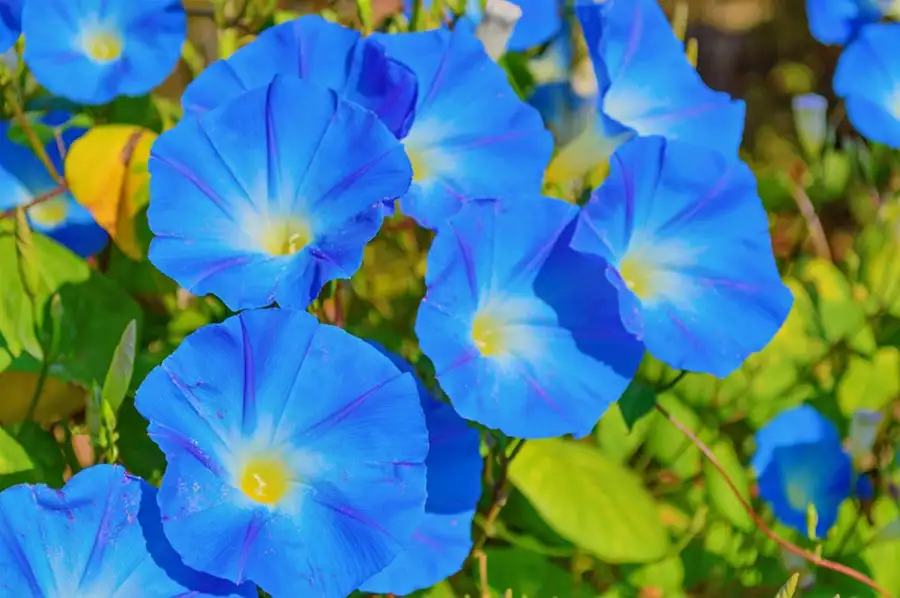
The common morning glory is a favorite of gardeners everywhere for good reason. The brightly colored trumpet-shaped flowers of the common morning glory have a slight fragrance and are popular with butterflies and hummingbirds. The buds are twirled up tightly and unfold when the sun hits them in the morning, giving them their unique name. Native to Mexico and Central America, common morning glory vines grow by clinging to nearby supports with tendrils, rapidly growing up to 12 feet or more during the season.
Mexican Passionflower

Mexican Passionflower’s green flowers have 5 large, green sepals, yellows centers, and rings of fleshy filaments that start out a dull red color, but later fade to violet. These flowers not only look strange, they smell strange as well. Even when not in bloom, Mexican Passionflower vines can be identified by their distinctive, round-tipped, bilobed leaves. This passion vine typically grows under trees in riparian areas and mesquite bosques.
Chocolate cosmos
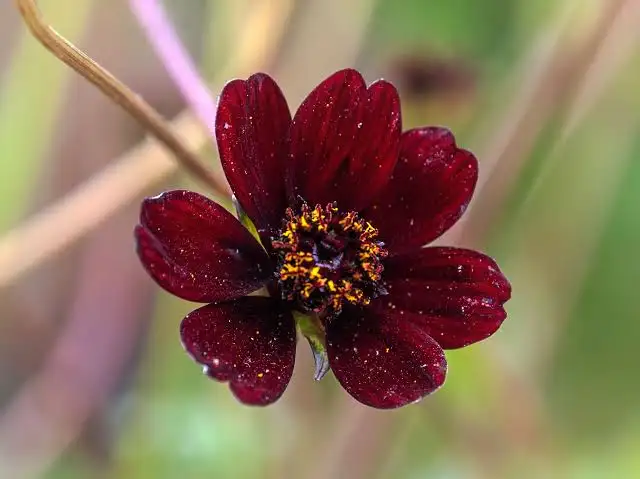
The chocolate cosmos, is a species of Cosmos, native to Mexico. It has often been claimed that it is extinct in the wild; however it is “quite abundant” in Mexico. These unique blooms are a rich, dark maroon with velvety rounded petals and dark brown centers. Their best characteristic may be their chocolaty fragrance. Similar to regular cosmos, the flowers of chocolate cosmos are a bit smaller, measuring an inch and a half across. The overall effect is very dramatic, making these flowers highly sought after for garden beds, containers, and floral arrangements.
Mexican poppy

Mexican poppy is a member of the poppy family and is native to Texas, Mexico and central America. The plant is bluish-green or greyish-green in colour with waxy marbling to the leaves. The leaves, which grow up to 20 centimetres long, are silvery green with white veining and deep regular lobes. It grows up to one metre in height. The flowers are about 6cm across. They have four light yellow or cream petals surrounding a dark red, three or six-lobed stigma. An extremely hardy pioneer plant, it is tolerant of drought and poor soil, often being the only cover on new road cuttings or verges.
Belize sage
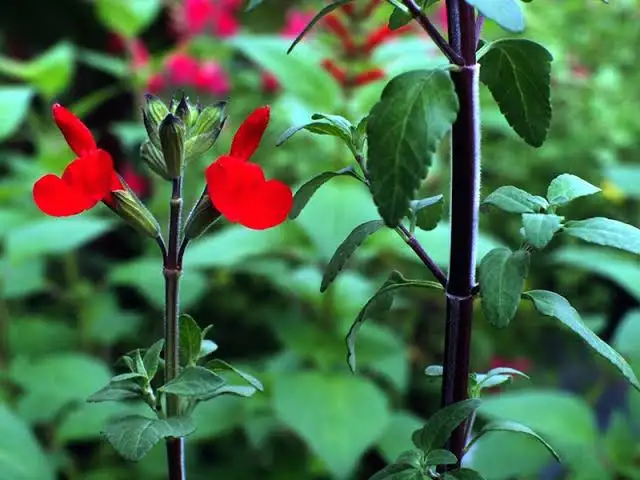
Salvia miniata (Belize sage) is a herbaceous perennial shrub from Belize and the Mexican state of Chiapas. Salvia miniata also known as Mountain Sage has striking luminous orange red flowers with lovely glossy green leaves which make it quite different from many others in the salvia family. The flowers grow in whorls on inflorescences up to 30 cm long. Salvia miniata reaches about 1 m (3.3 ft) in height and width during the summer growing season, with many branches from the base.
Dahlia
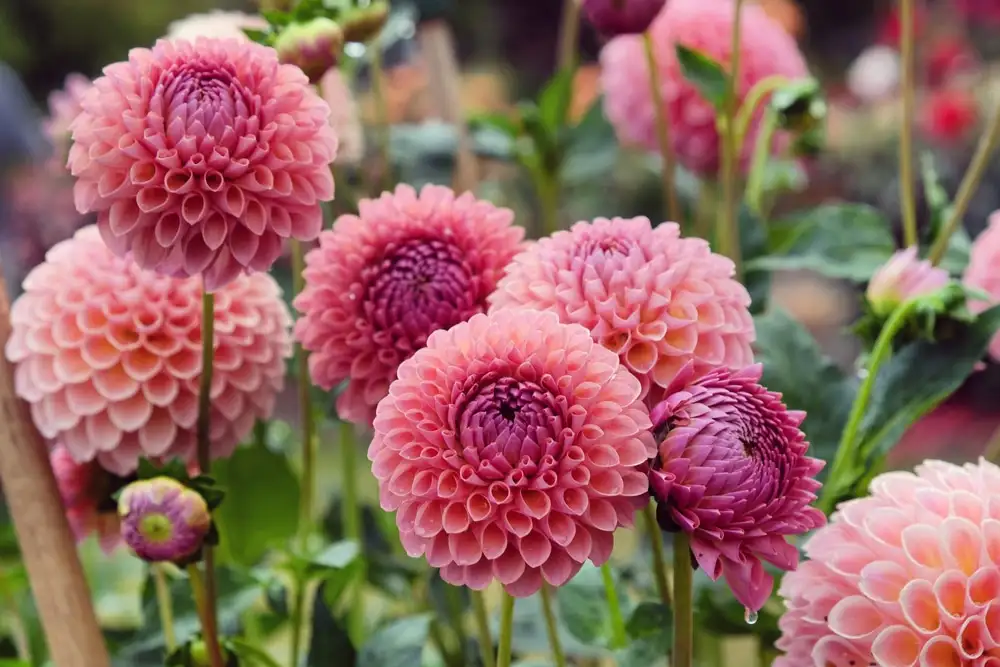
Dahlia is a genus of bushy, tuberous, herbaceous perennial plants native to Mexico and Central America. They bloom from mid-summer through the first frost and are available in a vast array of colors, patterns, sizes, and flower forms. Plant size ranges from compact border varieties to species that have plate-sized blossoms atop 6-foot plants. Despite this diversity, most dahlias grow on long, erect stems that give the blooms room to show off. Dahlias grow from tubers and can be planted outdoors after the last frost when the soil has warmed.
Yucca
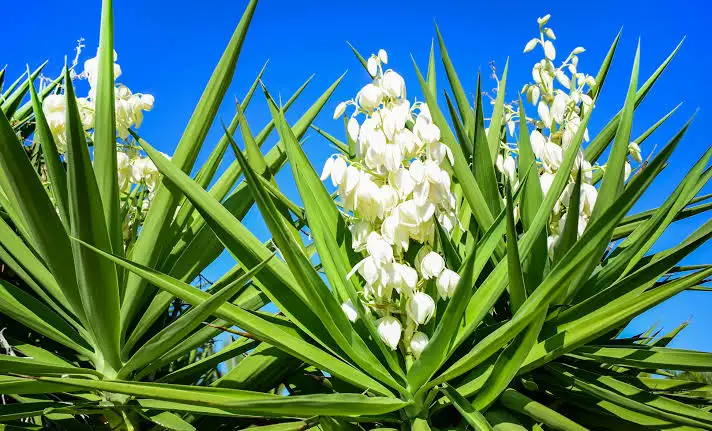
Yucca is a genus of perennial shrubs and trees notable for their rosettes of evergreen, tough, sword-shaped leaves and large terminal panicles of white or whitish flowers. They are native to the hot and dry parts of the Americas, particularly Mexico. Yuccas have adapted to an equally vast range of climatic and ecological conditions. They are to be found in rocky deserts and badlands, in prairies and grassland, in mountainous regions, in light woodland, in coastal sands and even in subtropical and semi-temperate zones.
Bird of Paradise

Bird of Paradise gets its common name from its unusual flowers, which resemble the beak and head plumage of a bird in flight. Native to South Africa and Mexico, where it also is called the crane flower, Bird of Paradise type plants are popular in conservatory plantings, as specimen plants in large containers in public buildings and ornamental landscaping, and in dwarf varieties as a houseplant. Bird of paradise flowers come in sets of three to five upright orange or yellow sepals emerging from a six-inch, boat-shaped bract, along with two to three dark blue horizontal petals.
Frangipani

Frangipani, or Plumeria rubra, is a group of mainly deciduous shrubs that are native to Central America, South America, Mexico and the Caribbean. The plant was carried to other parts of the world by missionaries and became a popular addition to gardens as far as Australia and Hawaii. Frangipani bears clusters of colorful blossoms in a variety of colors that bear a heavy fragrance, especially in the evening.
Mexican hat plants
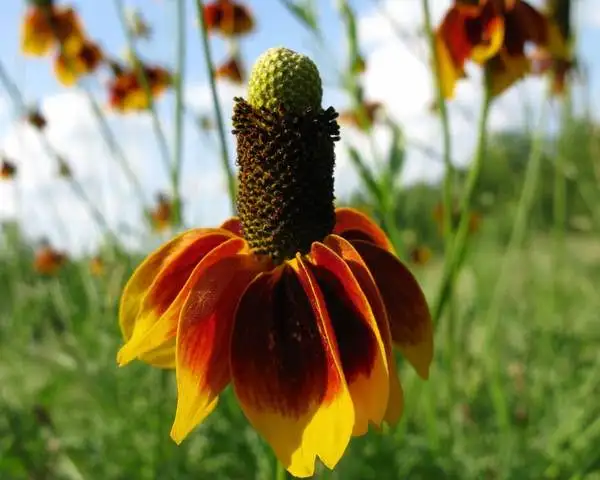
Mexican hat plants or prairie coneflower are a pretty, ornamental wildflower species in the aster family that can be planted in the fall or spring. This plant is easy to establish, fast-growing, and has long-lasting, drooping mahogany-red blooms that are tinged with yellow on the edges and long, prominent cylindrical disks in the center. They usually flower prolifically through the summer and into the fall. The flowers resemble a Mexican sombrero, growing natively in Mexico, inspiring its common name.
Lady’s Slipper
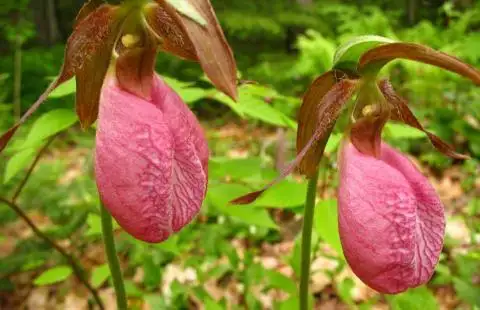
Lady’s Slipper is a uniquely shaped succulent with thornless stems that have a ‘Medusa-like’ growth habit that is more pronounced in light shade. The upright stems add a welcome vertical element to the landscape, and small orange flowers are produced off and on through spring and fall. They can be grown in containers or planted in the ground and do well in full sun or light shade.
Mexican-petunia
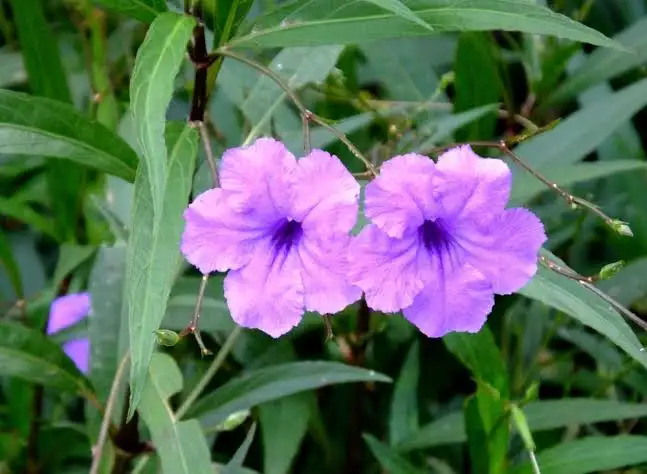
Mexican-petunia (also known as Mexican bluebell or Britton’s petunia) is described as a “hardy perennial edging plant for flower beds and as colorful groundcovers.” Mexican petunias are able to tolerate a wide range of growing conditions, but prefer wet or marshy soils, such as moist woodlands or the edges of ponds and lakes. They can withstand drought and even full sun in drier soils. The plants’ showy flowers are short-lived, but they open over a long period of time, beginning in early spring and continuing until frost. The shrubs grow one to four feet high and about the same in width.
Mexican Evening Primerose

Mexican Evening Primerose is a semi-evergreen popular for its magnificent pink, four-petal, bell-shaped flowers. It spreads in the landscape by underground rhizomes or seed to form extensive colonies growing from eight to twelve inches tall, and spreading to three feet. The leaves are small and bright green turning crimson to deep red in colder weather. Showy, pink blossoms with yellow veins appear in spring and bloom over a long period. Many insects and moths eat the flower nectar. The plant’s wild habitat includes rocky prairies, open woodlands, slopes, roadsides, meadows and disturbed areas.
Mexican Heather

Mexican Heather is a small shrub native to Mexico and Honduras. It is characterized by Small, trumpet-shaped flowers that bloom with six spreading petals, usually lavender, and green calyx tubes from summer to frost on a multi-stem plant reaching up to 2 feet tall and 4 feet wide when mature. Leaves are lance-shaped, glossy, and green, measuring about a quarter of an inch long.1 While it looks a lot like common heather, it is not part of the heather family and therefore nicknamed “false heather.”
Mexican Orange
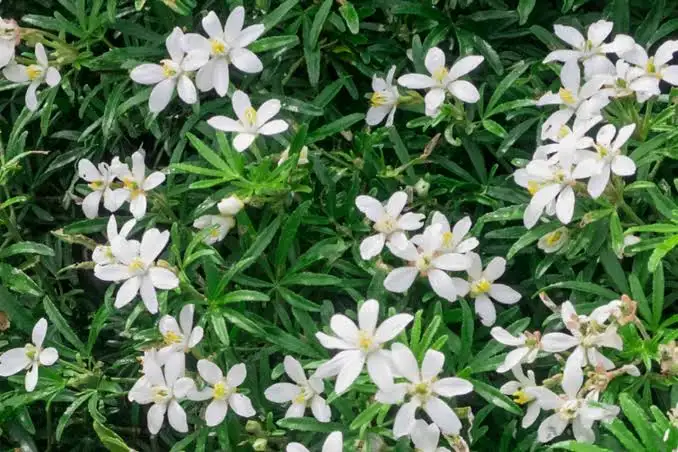
Originating from Mexico, Mexican Orange also referred to as Choisya is a moderate sized evergreen shrub that grows to roughly 6 feet and slightly wider. This plant is commonly known as Mexican orange due to the similarity of their flowers with those of the closely related orange, both in shape and scent. The foliage is also aromatic, smelling of rue when bruised or cut. The flowers are also valued for honeybee forage, producing abundant nectar. Frequently planted as an ornamental garden plant in mild climates, this species is reasonably frost hardy.
Mexican fleabane

Mexican fleabane is a vigorous, spreading perennial plant growing from woody rhizomes to a maximum height of 24 cm. Its leaves are located along the stem, the basal leaves dying off as the plant bolts. They are sometimes slightly toothed or lobed near the tips. The inflorescences hold one or more flower heads which are each about 1 cm wide. They have golden yellow disc florets in the center surrounded by a fringe of up to 80 white to pinkish ray florets. Part of Mexican fleabanes’ appeal is that they are easy to grow, versatile, and the abundant little flowers appear through the spring, summer, and even into the fall.
Mexican aster
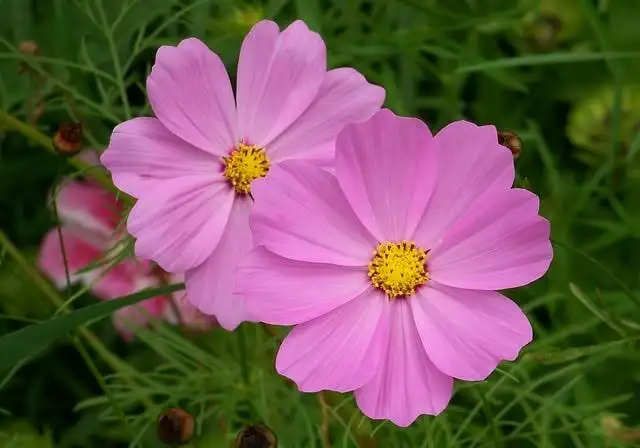
The Mexican aster flower is also known as Sulphur cosmos, is an exceptionally ornamental annual plant. The variety offered in our store delights with bright yellow blooms that sit atop slender stalks among feathery leaves. These tenderly looking plants are extremely hardy and undemanding in growing. Their numerous, plate-shaped flowers will adorn your garden from middle of summer to early autumn. This species perfectly fits onto elevated borders, where it would form a beautiful flowery meadow combined with other summer blooms. Cosmos blooms may also be used as cut flowers.
Mexican cigar
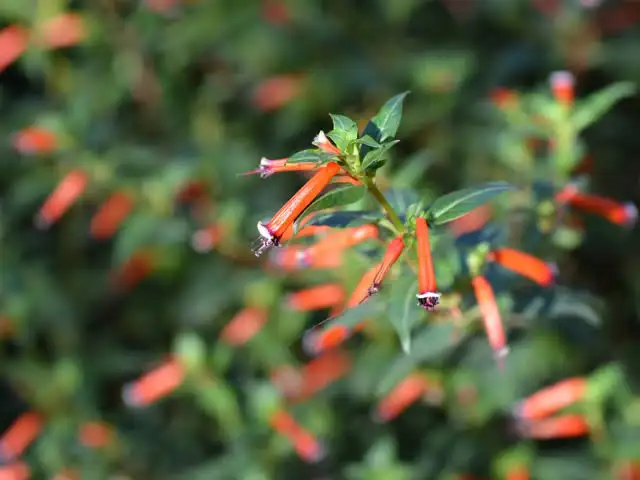
Cigar plant is more commonly referred to as the Mexican cigar plant or the firecracker plant. This tropical evergreen shrub has a bright red flower with white and black tips that could bear some similarities to a lit cigar. The flowers, which are attractive to hummingbirds and butterflies. When growing cigar plants as an annual in cooler zones, the blooms appear in summer. In the more tropical areas where it is hardy, cigar plants bloom off and on all year-round.